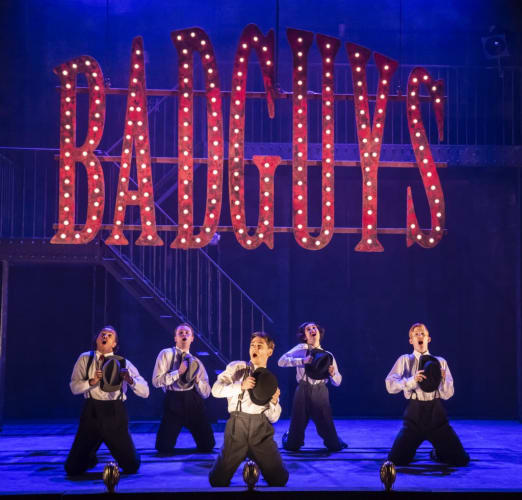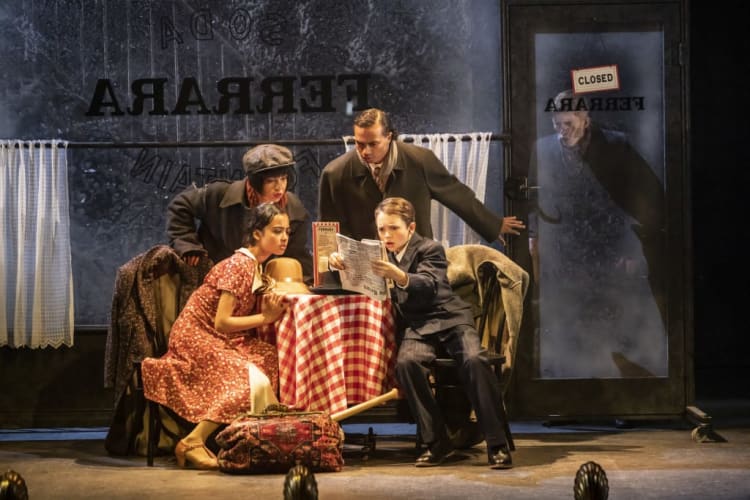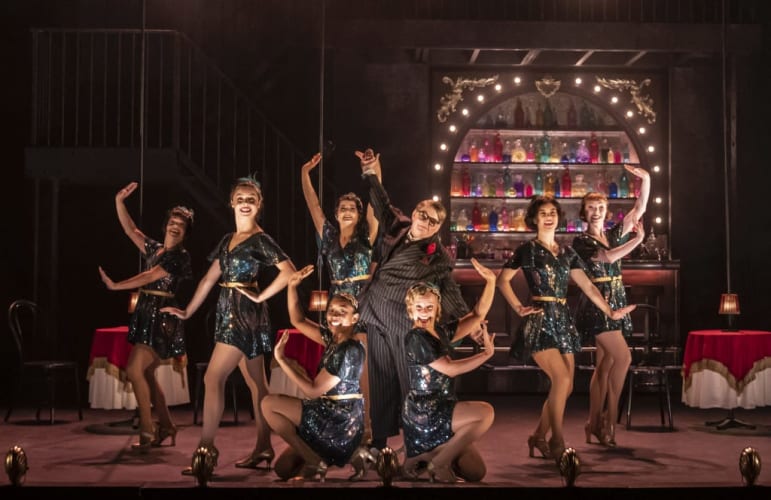In 1974, the young and ambitious Alan Parker decided to make a film that would appeal to his four young children. They were excited by gangster movies and loved musicals. The eventual outcome was Bugsy Malone, a film about gangsters and their molls distinguished by the fact that it was performed by a cast of children.
In the current touring production from Theatre Royal Bath, the principal roles are played by young children while the secondary roles and the ensemble look more like young adults with more developed skills and greater performance experience. This places the younger performers at something of a disadvantage.
It is interesting to compare the concept and realisation of Bugsy with Dennis Potter’s 1979 TV play Blue Remembered Hills in which children are played by adults and a discord emerges between child and adult social behaviour. In this performance, adults are played by children, something familiar from school plays and always a pleasure to watch without expectation of high professional skills.
Here there are capable performances brimming with potential from Gabriel Payne as Bugsy, Mia Lakha as Blousy and Jasmine Sakyiama as Tallulah, but others in the young cast were struggling with characterisation, voice projection and basic performance skills.
There is still a lot to entertain in this vigorous and visually exciting production. The set by Jon Bausor provides the solid metal staircase of a tenement building as a backdrop and entry point for a variety of different settings, internal and external. The addition of supplementary items of furniture, dropped in from the flies or wheeled on during scene links, provide the setting for Fat Sam’s night club, street shoot-outs, a diner with a large window, a magnificent gym scene and a car chase. The chorus costumes, male and female, reflect the period and are ideal for the dance routines.
Sean Holmes’s direction is energetic and inventive throughout. The small orchestra of percussion, guitars and brass under Connagh Tonkinson’s direction provides a rich tone to accompany the singing and a driving rhythm for the dance sequences.
Choreography by Drew McOnie is an essential and dynamic aspect of the show, energetically performed by an outstanding ensemble of dancers. On occasions, the group of male dancers is supplemented by women in suits or braces who are indistinguishable from the men in identity and energy.
Alan Parker’s play and Paul Williams’s words and music have held up well in the intervening years. The American prohibition years of the 1930s and '40s have provided rich pickings for later film-makers, for actors like Edward G Robinson, James Cagney and Humphrey Bogart, and audiences who have continued to enjoy films like Some Like it Hot.
Parker was quite right in anticipating that gangster stories and musicals would go well together. The current production is ample proof of that.


